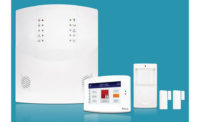The bunker in Bucktown is becoming inundated with Wi-Fi devices. As I attempt to count up the number of devices competing for my wireless connectivity, I believe I have about 11 devices that are banging through my airwaves most of the day.
As most of us can see, our world is becoming increasingly connected via Wi-Fi wireless Ethernet. The growing proliferation of smartphones/tablets, Internet TV boxes, gaming consoles, and even thermostats all need quality Wi-Fi communications to operate properly. I believe it’s safe to say that in the future most “client” IP devices will be Wi-Fi, while the network infrastructure (switches, routers and Wi-Fi access points) will continue to be wired or cabled.
Because of the non-wired nature of connections between Wi-Fi client devices and wireless access points, many end-users are overloading their old 802.11b/g/n wireless networks, slowing down communications for all devices that are using the Wi-Fi simultaneously.
To address this issue the IEEE Standards Association approved a new Wi-Fi standard, 802.11ac, in January of 2014. This new standard provides a theoretical 1.3 Gbps of throughput, which is approximately twice the bandwidth of the previous “hot rod” 802.11n standard at 600 Mbps.
About a year ago I obtained an 802.11ac access point and installed it upstairs in our two-story home. When I connected to it with my Android, the Wi-Fi bandwidth jumped from about 30 Mbps to more than 150 Mbps. While this was a great increase in bandwidth, it came with a relatively high cost for the access point, as is typical when new technology hits the market. It starts off expensive and, once sales start rolling in, the prices drop.
Even with the bigger Wi-Fi pipe I realized I had other issues that were choking my LAN and Internet throughput. I zeroed in on my old purple and black 802.11g router/switch. I suspected that one of the issues was that that switch provided only 10/100 wired Ethernet connections, while my ISP box and new Wi-Fi access point can both communicate with the 1000 Mbps/1 Gbps Ethernet protocol.
So out with the old and in with the new. The TRENDnet TEW-813DRU is a complete Internet router with four built-in wired Ethernet ports and the wired port for connection to an ISP adapter, all with 10/100/1000 Mbps protocols. This high-powered router sells for less than $90 at your favorite distributor.
Replacing the old router was very simple and quick. First I went into the programming of the old box and took screenshots of the IP addresses and DHCP settings, the Wi-Fi SSID and security code, and the “port forwarding” settings for my variety of IP cameras. After printing these out, I sat down with my laptop and programmed the new TRENDnet router with the same information. Once that was done all I had to do was unplug the network cables and power cord from the old router and plug the network cables into the TRENDnet unit. I then toggled the power on the ISP box. Once it had reset itself, I powered up the TRENDnet router and everything was working, and much faster than it did before.
What I found interesting when programming the device is the multiple Wi-Fi options that are available. Up to three separate combinations of SSIDs and security codes can be programmed into the router, providing a number of flexible options.
It’s important to remember that while the Wi-Fi access point can be upgraded, there may be older remote or client devices on the network that can do only 802.11b or g Wi-Fi. With this TRENDnet router, those older devices can be segregated onto the 2.4 GHz radio band.
A separate SSID and security code can be set up for newer devices that have 802.11n and/or 802.11ac capabilities.
(Please note that for security purposes I have clipped off the setting screens for the security codes.)
The third possible SSID setting is unique in that it can be programmed to provide a “guest” network that can only go to the Internet, and not to any internal devices within the LAN.
So I’ve got great Wi-Fi in my house and am no longer afraid to hand out my security code to my daughter’s friends who want to use their smart devices in our home.
Why should my faithful readers care about this router? Because every time you visit a client’s home or office you should take a look at their network router and other infrastructure equipment. If their devices are old, it’s a simple upgrade that is easy to perform and doesn’t cost a lot of money; your customers will thank you for giving them the upgrade they need.






